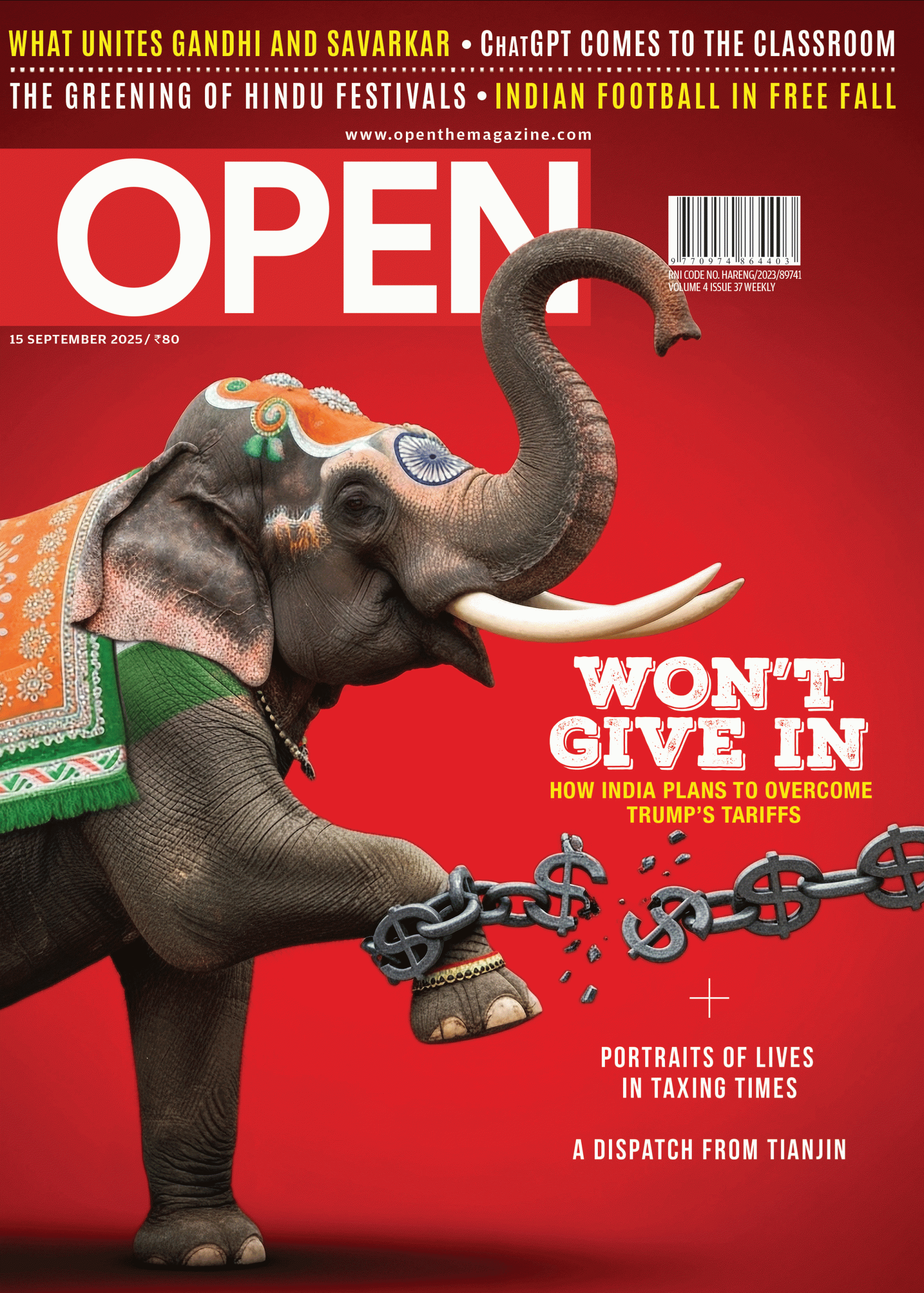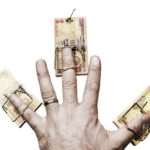The Right ACT
Arun Jaitley’s maiden Budget lays the foundation for growth on the wreckage left behind by his predecessor
 Dhiraj Nayyar
Dhiraj Nayyar
 Dhiraj Nayyar
Dhiraj Nayyar
 |
10 Jul, 2014
|
10 Jul, 2014
/wp-content/uploads/2015/11/Budget-rightact-main.jpg)
Arun Jaitley’s maiden Budget lays the foundation for growth on the wreckage left behind by his predecessor
"The target of 4.1 % fiscal deficit is indeed daunting. Difficult as it may appear, I have decided to accept this target as a challenge. One fails only when one stops trying”
– Arun Jaitley
On a scale of one to ten, how would you rate Finance Minister Arun Jaitley’s first budget? It’s the favourite question of every television anchor, the one every expert knows will be asked upfront. Unfortunately, both the question and the answers are devoid of any real meaning. How do you judge a Union Budget? After all, good or bad is relative to some prior expectation.
If Jaitley’s maiden effort is judged by the massive mandate his Government received—the biggest in three decades for any single political party—it must be rated as a disappointment. If it is judged against Manmohan Singh’s 1991 performance—in the context of a similar economic crisis—it is hardly radical. If you judge it on style, Jaitley’s two-hour performance gave Pranab Mukherjee a run for his money on the boredom quotient; even the dour Manmohan Singh was more succinct, and added flourishes of poetry and literature, whether by quoting Iqbal or Victor Hugo.
And yet, despite its length, its plentiful trivia— some derisively call it the ‘Rs 100 crore Budget’, given the number of schemes launched with that amount of funding, and its apparent lack of radicalism, Jaitley’s Budget gets the job at hand done, and that job is to put the economy back on a path of high growth and low inflation. It is the Budget of an efficient workman, of a Government which believes that reform will come in stages rather than with a big bang. It is a process more than a single event. In all fairness, Jaitley laid out the boundaries of expectation at the start of his speech when he said that this was just the “beginning”. In the end, the Budget was a mix of the good and the vague. The NDA’s eventual success will depend on how the vague translates to reality.
Consider the unambiguously good work. Jaitley has worked on building a solid foundation, and contrary to some criticism of ‘continuity’, he has made important departures, in the right direction, from his UPA predecessor.
The most pressing challenge for the Government in its task to revive growth and manage inflation is to stop living beyond its means. Because when the Government overspends, it fuels excess demand, inflation, forces interest rates up and deters productive private sector investment, destroying the foundations of a prosperous economy. P Chidambaram recognised that reality and strived to reduce the fiscal deficit in the last two years of the UPA Government’s term. It makes eminent sense for Jaitley to follow tight fiscal targets. His promise to bring the Centre’s fiscal deficit down in a calibrated manner to a respectable 3 per cent of GDP by 2016-17 is unexceptionable. But he has signalled an important deviation from Chidambaram’s deficit reduction strategy.
Government expenditure is classified under two heads: Plan and Non-Plan expenditure. The latter consists of the unproductive expenditure of the Government, most on subsidies, wages and salaries and interest payments on debt. The former comprises the more productive investment expenditure of the Government, on infrastructure for example.
Unlike Chidambaram, who made big cuts in Plan expenditure to meet his targets, Jaitley has given Plan expenditure a fillip, raising it by a quantum of 26.9 per cent, from an actual amount of around Rs 4.5 lakh crore in 2013-14 to an estimate of around Rs 5.75 lakh crore in 2014-15. In the process, he was able to double the allocation for the building of highways to Rs 50,000 crore, among other investments. Jaitey is sending a signal—his Government is committed to reducing the deficit but not at the cost of boosting infrastructure spending, so crucial to reviving investment and growth. The NDA has also avoided the temptation of large populist schemes; Chidambaram was always hampered by the fact that his Government was pushing the Food Security Bill even as he was cutting the deficit. Jaitley may be derided for the large number of Rs 100 crore schemes, but think of the damaging consequences for the country’s fiscal health if each were allocated thousands of crores.
There is, of course, a corollary challenge. The Government will need to cut its non-plan expenditure to meet its medium- term targets. The obvious place for cuts is subsidies— fuel, food and fertiliser. In a radical Budget, Jaitley would have made big cuts in at least fuel and fertiliser subsidies. But the Government prefers a more cautious approach and has left the specifics vague for now. The announcement of an Expenditure Management Commission—which will be submit a report within the next eight months on how to get this done—was necessary to give credibility to Jaitley’s arithmetic. Of course, there will come a time when Jaitley and Modi will have to bite the bullet on controlling runaway subsidies. They cannot afford to let the recommendations of this Commission gather dust. That would be vintage UPA. But for now, Jaitley has won investor confidence on managing the fisc.
The second major departure that Jaitley has made from the UPA era is in the domain of taxation. The Finance Minister had no real room for big-ticket measures: to cut tax rates for example, or to announce the introduction of the GST, which still needs consensus among state governments. But he has moved decisively to signal to investors that his Government will end the harassment of business by using the sword of taxation (the ‘tax terrorism’ of the UPA). The Finance Minister stopped short of repealing the infamous retrospective tax amendment (a la Vodafone) of the UPA. He even stated that the Government had the sovereign right to enact such amendments. But he assured investors that his Government would not enact any further retrospective amendments and that all the cases pending under the UPA’s retrospective amendment will be dealt with by a high-level committee. He also promised to make the tax system less adversarial—marked by less litigation and more settlements—and promised to introduce more dedicated legal benches to dispose of tax disputes faster. These steps are more significant than they may sound. An estimated Rs 4.82 lakh crore (almost 6 per cent of GDP) is locked out of use because of litigation, company liquidation matters and untraceable taxpayers.
For good measure, and so that the middle-class doesn’t feel trumped by an exclusive focus on investors, Jaitley raised the income tax exemption level by Rs 50,000. It is nowhere near as radical as lowering tax rates, but it is a small ‘thank you’ note to the middle-class for the ruling party’s resounding election win—it is, in other words, entirely affordable populism.
The one area in which Jaitley was perhaps over-cautious was the domain of foreign direct investment (FDI). Of course, raising the FDI limits in two important sectors, defence and insurance, from 26 to 49 per cent are important signals. Still, the Finance Minister could have opted for an increase in limit to 51 or 74 per cent, thereby ending the entirely unnecessary insistence on Indian ownership and Indian management. In defence, most of India’s requirements are imported from foreign owned, based and managed suppliers.
Realistically, no foreign defence manufacturer is going to enter India as a minority shareholder without management control of a joint venture. To attract top-quality investors, a minimum of 51 per cent FDI ought to have been allowed. Even in insurance, there is a case for allowing foreign firms majority control. That’s the only way to attract big investors to pour big money into India.
Given that Indian firms, particularly public sector companies, already have a strong presence in the sector, there is no case for affording them protection from competition. All that a protectionist policy has achieved is a grossly under-penetrated market for insurance in India. Obviously, overcoming the bogey of foreign control is still a challenge for any Government in India.
The second area where Jaitley might have been aggressive was in financial sector reform. Some of his announcements were good, like asking public sector banks to divest their shareholding to raise equity capital rather than have the Government pump in money from its limited resources. But some of his other statements on the sector fall in the category of ‘vague’. Jaitley echoed the Economic Survey when he spoke of the need to implement some recommendations of the Financial Sector Legislative Reforms Commission (FSLRC) and to set up a monetary policy framework for the RBI to operate with. However, he sidestepped which of the FSLRC’s recommendations are being actively considered for implementation. Not all these are controversial. Most of them would involve battling vested interests within the system—such as existing regulators and the RBI.
As of now, Indian borrowers, whether investors or consumers, pay exorbitantly high interest rates compared with the rest of the world. That is because the Indian regulatory system has opted for a ‘safety first’ strategy. The FSLRC recommendations aim to replace that mindset with an emphasis on competition and lighter regulation. If India has to grow at 8 per cent plus levels, investors and consumers need access to cheap finance domestically. The days when plentiful cheap finance was available from global markets are unlikely to return any time soon.
The setting up of a monetary policy framework is a seemingly technical and academic exercise. Yet, it is crucial if the Government wants to bring inflation down to a manageable level. At the moment, the RBI does not have a clear mandate: whether to target inflation or growth, or the exchange rate, or all three at the same time. The Government must evolve a framework where it gives the RBI a clear objective and then gives it full autonomy to achieve it. Ideally, the objective should be low and stable inflation because high inflation kills purchasing power, depreciates the rupee and creates investor uncertainty. Jaitley has promised a framework but given no timeline for it.
The other major pressure point on inflation comes from the agriculture sector and food. The Finance Minister made a mention of restructuring the highly inefficient Food Corporation of India. That was a good start. He announced a new irrigation scheme but allocated only Rs 1,000 crore for it. Estimates suggest that at least Rs 50,000 crore would be needed to irrigate all of India’s rain-fed areas. Jaitley gave no assurances on allowing a greater role for the free market in agriculture, something the Economic Survey—released just a day earlier— has recommended.
The track record of the NDA Government on managing food prices over the last six weeks has been troublesome. It has resorted to old-style price controls under antiquated laws like the Essential Commodites Act. Those have counter-productive effects—they dissuade farmers from producing these commodities, further reducing supply and fuelling inflation. Farmers need to be freed of price and quantity interventions just as industry was in 1991. That is the only way to ensure good prices for both farmers and consumers.
There is little doubt that Narendra Modi and Arun Jaitley inherited a terrible economic legacy from their predecessors. So did Narasimha Rao and Manmohan Singh 23 years ago. Rao and Singh initiated structural reforms of the economy with a big-bang budget. They had no choice. India was on the verge of bankruptcy. The economic situation in 2014 isn’t quite that bad, but it is more than apparent that only radical structural reforms can take India onto a trajectory of 8 per cent plus growth. Eventually, Modi and Jaitley will need to liberalise land, labour and financial markets. Those will be tough decisions and they need not be made in a Budget.
For now, Jaitley has done the spadework. Tougher decisions lie ahead. The success or failure of this Government will not be judged by a single Budget, but by its performance over five years. That may be a long time in politics, but it is a very short time in economics.

/wp-content/uploads/2025/09/Cover_Tariff-scaled.gif)











More Columns
Peter Navarro: Trump’s Rabble Rouser VK Shashikumar
Faith, Fury and a Poet: Why Javed Akhtar’s Critics Miss the Point Tufail Ahmad
Is Sachin Tendulkar Tipped To Be The Next BCCI President? Short Post